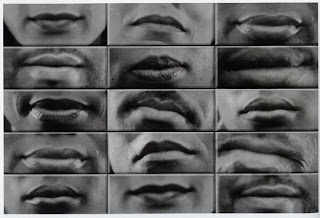
Vik Muniz
1. I don't actually know a lot about Duchamp the man - I was wondering how aware he was of his own legacy and whether or not he was an arrogant S.O.B. I imagine that being the case though. Does using a lowly object from every day increase the value of that object? No, instead it undermines and questions the value of Art Thought - value in art is whatever thoughts of value we place in the object.

Tony Cragg
2. Usually I have a hard time appreciating sculpture made with found objects. There's a whole hell of a lot of it and most of it is disengaging because the artist puts his own meaning into each object. It's usually either too personal or too obscure, the meaning that is, for me as a viewer to understand and thus appreciate. I respond much more the category
of Art that uses Everyday Objects to talk about the meaning of those objects, whether it's losing their original intents entirely or exploiting them in a n
ew way for new considerations. Falling in the category were Tom Friedman and Tara Donovan.

Tom Friedman
3. We had Charles Ledray as a visiting artist to ceramics last year - he sat in my adult booster seat! He has a more satisfying approach to the whole mass-production versus hand production of objects discussion.

Josiah McElheny
4. I noticed there weren't many examples of 2-dimensional work utilizing found and everyday objects, except Kruger and Levine. She just mentioned Rauschenberg in passing, not showing an example of the combines at all. It seemed a short chapter for all the art there is out there in this category, come to think of it.. It's like she had too much and edited a lot out when the book was put together, or something is missing.

Robert Rauschenberg
5. Not that I don't think that objects can be imbued with personal meaning for a person or that it's not valid to use that strategy in one's art, it's just that I generally find really personal art to be inaccessible. Like Louise Bourgeois (again) - she makes objects loaded with personal imagery, symbols she chooses and assigns with personal memory, and yet we can easily understand her message through titles and an innate universality.










